Indigo Composting Floor Workshop
Last month, I had the great good fortune to participate in a workshop with Rowland Ricketts, who is probably one of very few people in the US who understand and employ the traditional composting floor method of processing Japanese indigo plants into a lasting dye powder. This workshop was sponsored by the Fibershed Project and hosted on Marin Carbon Project land, where there is now a fabulous building, incorporating two containers for walls that have storage, and a roofed composting floor for regional processing capabilities.
Rowland is THE Textile Department of Indiana University, and studied indigo and its preparation for nine years in Japan. His artwork can be viewed here.
As a part of introductions, Rowland gave this great talk to get us started… Please take the time to listen to his philosophy about how making things brings meaning to our lives.
Then, we began building the layers that would comprise the composting floor. Lighter work, with many to create. The purpose of the elaborate composting floor is to serve as drainage throughout the 100-day process of composting the dried plant matter into dye powder. This building will be able to handle about 450 cubic feet of material, piled on and covered with rice mats, while the decomposition takes place. The sand, rice hulls and clay composition will help to wick away the moisture created during the process.
Four inches of sand forms the first layer.
While tools help some, the best method of compacting the sand into that dense layer is stomping with our feet! The next layer is four inches of rice hulls.
We needed to don our masks for this step… Rowland was envious of us living so close to rice-growing country, as it was not a difficult matter to get the rice hulls, a by-product of the vast California rice-growing industry. He needs to travel several hours to procure his rice hulls.
Once the rice hulls were compacted to the proper level, an additional layer of sand was added to keep them in place. We needed to add it carefully, measuring and leveling while not disturbing the rice hull layer.
The clay layer, only an inch, comes last. Rebecca had been able to procure regional clay, from the Sierra foothills, however it was a very fine texture that required much effort to compact into place. Stomping was tried (nice skin treatment for bare feet!), but rolling worked better.
The process truly took our group ALL day, and being January, the day was actually too short. I needed to leave as the shadows were lengthening at about 3:30 PM, in order to drive across the state (yes, I know it looks skinny on the map!). While the processing facility is located within my fibershed region, we are at opposite sides, with Nicasio being in the coastal foothills, and my home in the Sierra foothills… I made it back long, long after dark. A smaller team finished up the clay layer the next day and I intend to go back soon to peek in on the composting process. Of even greater importance, I will be sharing in the process by storing up the vegetation from next summer’s Japanese indigo crop and taking it to the facility to be processed next fall. I had originally attended the workshop thinking of building a facility here, but came away grateful for the possibility of collaborating to keep an ancient tradition alive.

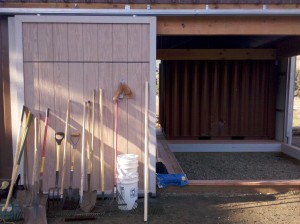
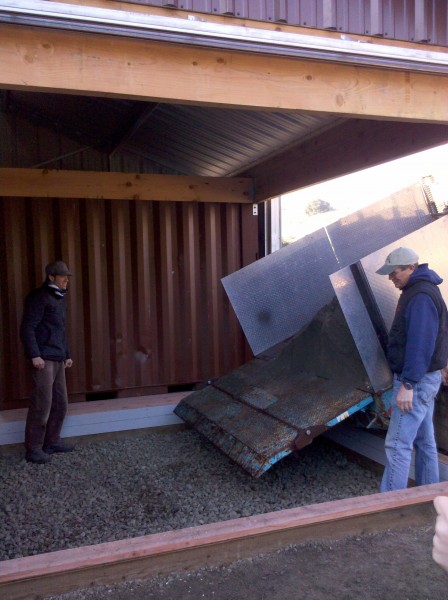
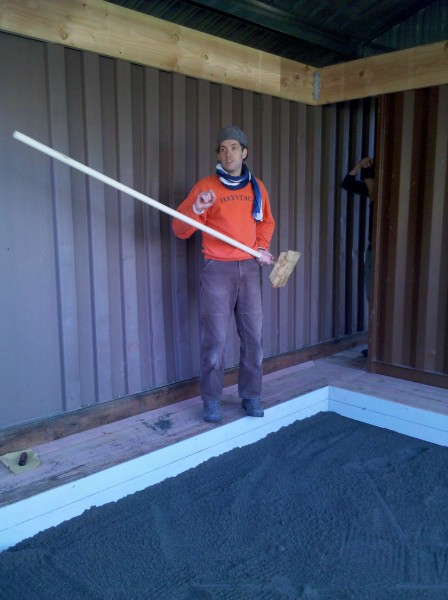
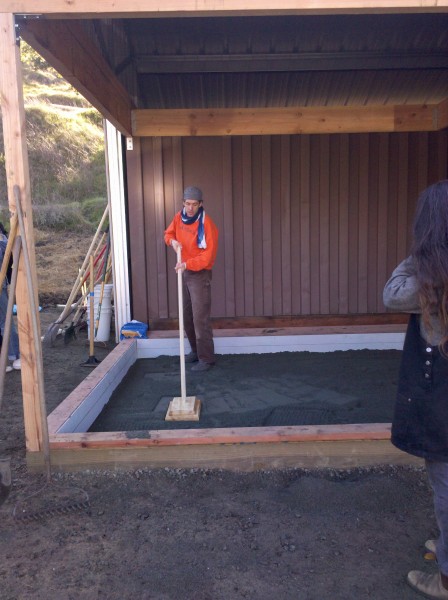
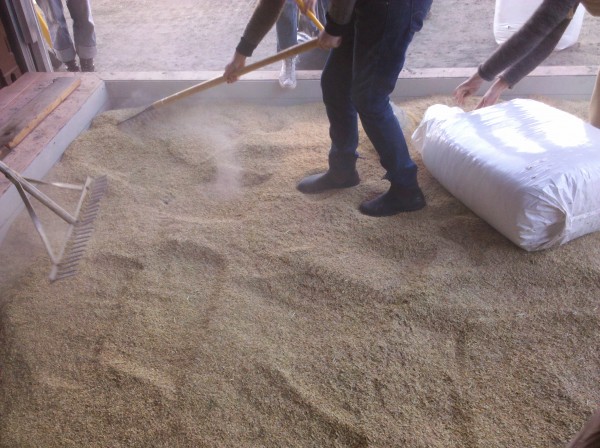
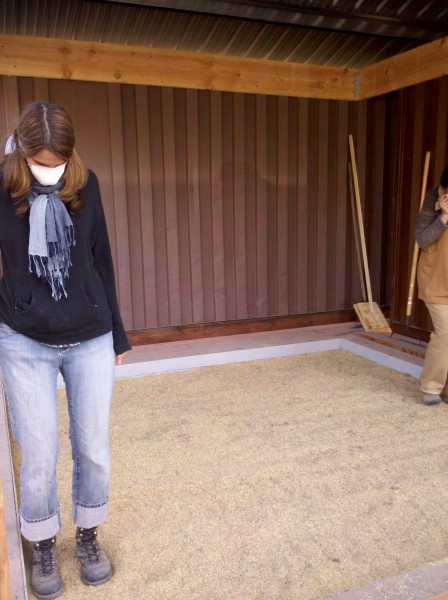
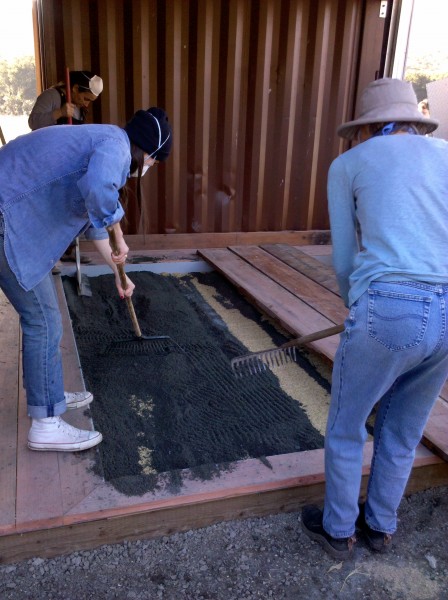
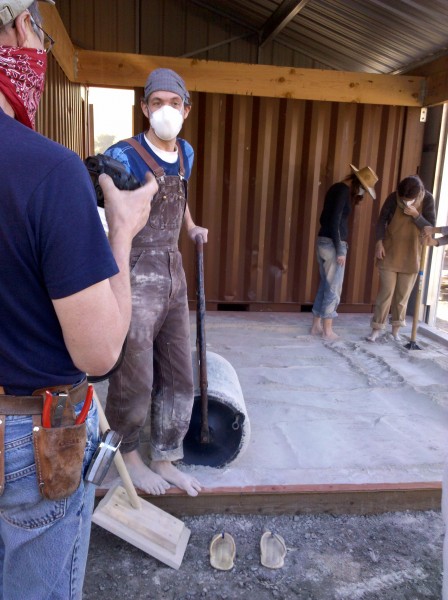
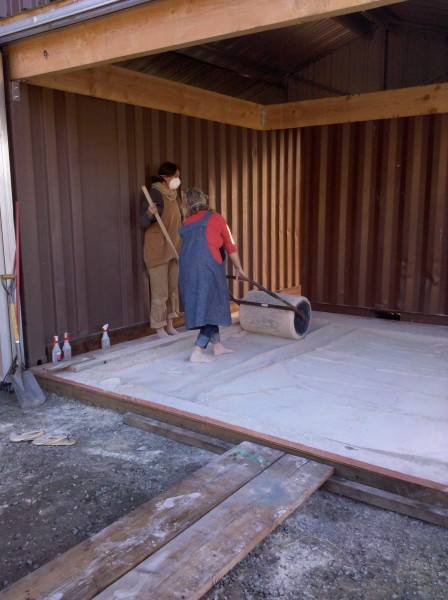







Thanks for this post, Birdsong. It was good to watch the video and review the things that Rowland talked to us about at the workshop. I’m looking forward to contributing my small bag of dried indigo leaves to the compost pile sometime this month, and then learning how to use the composted leaves for an indigo vat once the composting is done.
This is very interesting. The technique is similar to making woad balls. I wonder if it is the clostridium bacterium that transforms it from indigo precursors to usable indigo pigment, similar to making woad balls.
Thanks for sharing,
Sarah
We used to also visit Aizenkobo, and it is well worth the trip for anyone interested in natural indigo dyeing.
it is well worth the trip for anyone interested in natural indigo dyeing.